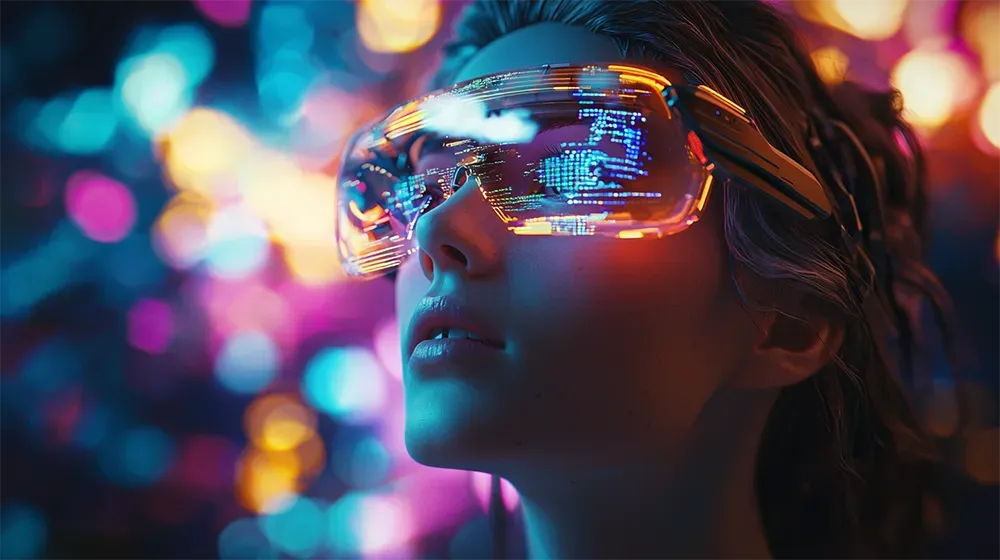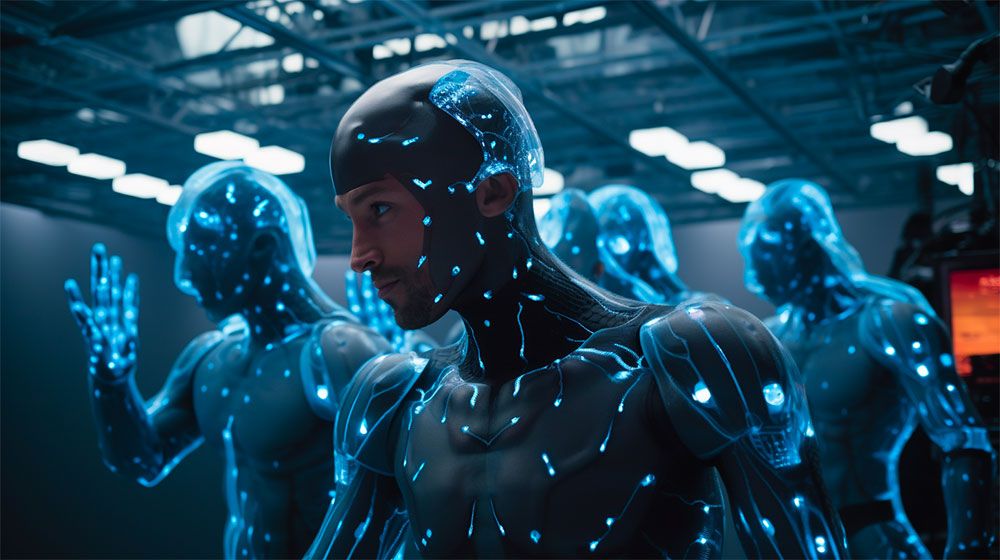Metaverse 2.0 – The Hyper-Realistic, AI-Driven Spatial Internet

If this were a contest for packing the most buzzwords into a single title, this article might take the prize. However, beyond the jargon, there’s substance here that shouldn’t be overlooked. While the initial hype around the metaverse may have cooled after Facebook’s rebranding to Meta, with much of the spotlight shifting to Large Language Models (LLMs), the metaverse is poised for a resurgence.
This renewed momentum is driven by rapid advancements in digital technologies pushing the boundaries of what the metaverse can offer, transforming it into a hyper-realistic, AI-driven spatial internet.
Initially perceived as a futuristic playground for gaming and virtual social interactions, the metaverse has rapidly evolved into something far more profound—ushering in what is now being referred to as Metaverse 2.0. This new iteration will bridge the gap between the digital and physical worlds, creating hyper-realistic, AI-driven environments that will revolutionise industries, human interaction, and the very nature of our online presence.
The Dawn of Metaverse 2.0
Metaverse 2.0 is characterised by a significant leap in technological capabilities, where photorealistic avatars, advanced AI, and real-time data processing converge to create digital environments that are nearly indistinguishable from reality.
Lex Fridman’s conversation with Mark Zuckerberg in early 2024 highlighted a vivid example of this leap, where they interacted as photorealistic avatars within the metaverse. Fridman described the experience as feeling like a genuine in-person conversation despite being miles apart—a testament to the strides Metaverse 2.0 has made in replicating physical reality in a digital space.
This transformation is not just about enhanced visual fidelity but about creating a truly immersive experience that integrates seamlessly with the physical world. The potential of Metaverse 2.0 lies in its ability to offer experiences that go beyond traditional virtual reality (VR) and augmented reality (AR), pushing the boundaries of what is possible in digital spaces.
A Glimpse into the Future
In my fourth book, ‘Step into the Metaverse’ (published in 2022), I already gave a sneak preview of what this Metaverse 2.0 would look like using a fictional story that started the book. This imagined world was not just a distant dream but a tangible vision of what the metaverse could become—a fully immersive digital universe where the lines between physical and virtual realities are blurred beyond recognition.
In the future, the metaverse will be a seamless extension of our daily lives, offering hyper-realistic, AI-driven experiences that are deeply integrated into both personal and professional spheres. It is a spatial internet where digital environments replicate the physical world with astonishing accuracy.
This level of hyper-realism is made possible through advanced technologies that render digital spaces in exquisite detail, allowing users to interact with these environments as naturally as they would in the physical world. Everything from the textures of objects to the ambient sounds of a virtual setting is designed to make the experience indistinguishable from reality.
The metaverse that I envisioned two years ago is powered by AI. It generates and adapts the content within digital spaces and personalises interactions to the individual user. In this mixed reality, AI is the engine that drives real-time responsiveness and creates dynamic environments that evolve based on user behaviour and preferences. The metaverse is no longer a static backdrop but a living, breathing digital ecosystem that adapts and responds to the needs and desires of its inhabitants. In this world, the metaverse will become as pervasive as the air we breathe.
My fictional depiction served as a glimpse into the potential of the metaverse. In this world, the digital and physical coexist in harmony, where AI enriches our interactions and where the boundaries of reality are continually redefined. As digital technologies continue to advance, this vision is not just a speculative future but a roadmap for what the metaverse could soon become.
These advancements set the stage for a new era of digital transformation, where businesses and consumers alike can expect a more immersive and interactive online experience. At the heart of this transformation are the three pillars of Metaverse 2.0, which collectively define the unique characteristics and capabilities of this next-generation digital landscape.
The Three Pillars of Metaverse 2.0
Metaverse 2.0 is not just an extension of the current digital landscape; it is a fundamentally new environment built on three key characteristics that distinguish it from its predecessor. These pillars—hyper-realism, real-time interactivity, and AI-generated content—are what make Metaverse 2.0 a revolutionary leap forward in how we experience and interact with digital spaces.
Hyper-Realistic Environments
At the core of Metaverse 2.0 is its commitment to hyper-realism. Unlike earlier iterations of the metaverse, which were often characterised by cartoonish graphics and limited detail, Metaverse 2.0 aims to create digital environments that are nearly indistinguishable from the real world.

This level of realism is achieved through advanced 3D rendering techniques like Gaussian Splatting, which allows for creating highly detailed and accurate 3D objects from text descriptions. Complementing these advancements, tools like Flux and Runway ML’s Gen-3 Alpha are pushing the boundaries of hyper-realistic image and video generation, offering a glimpse of what the future holds for immersive digital environments. These developments collectively point toward a future where the visual fidelity of the digital world rivals that of the physical, creating experiences that are increasingly indistinguishable from reality.
The result is a digital space where objects, avatars, and environments look and feel incredibly lifelike, enhancing the immersive experience and making virtual interactions feel as authentic as their physical counterparts.
Real-Time Interactivity
The second defining feature of Metaverse 2.0 is its emphasis on real-time interactivity. In this new digital frontier, users can interact with the environment and each other in ways that are immediate and seamless. This real-time capability is supported by advanced technologies such as NeuRBF (Neural Radial Basis Functions), which allows for dynamic and adaptive signal representation in 3D spaces.
NeuRBF represents a significant leap in the field of neural fields, particularly in 3D space representation, which is crucial for the development of Metaverse 2.0. Unlike traditional neural fields that rely on fixed grid-based structures, NeuRBF introduces adaptive radial basis functions that offer greater flexibility and spatial adaptivity. This adaptivity allows the model to closely align with target signals, capturing intricate details and high-frequency components more effectively than previous methods.
As a result, we can now create more accurate 3D reconstructions and smoother transitions in the visual representations, which are essential for creating the hyper-realistic environments that define Metaverse 2.0.
Moreover, NeuRBF enhances its representation capabilities by incorporating multi-frequency sinusoid functions, allowing each radial basis function to capture a broader range of details without requiring additional parameters. This increases the accuracy of the 3D models and ensures that these models remain compact and efficient, which is critical for real-time rendering in immersive digital environments.
A digital forest
In essence, NeuRBF’s combination of spatial adaptivity and enhanced representation through multi-frequency radial bases set a new standard for 3D scene reconstruction and rendering, making it a foundational technology for the hyper-realistic and interactive experiences that Metaverse 2.0 aims to deliver
This means that objects and environments within the metaverse can respond instantly to user inputs, creating a fluid and natural interactive experience. Whether it’s a conversation with a photorealistic avatar or manipulating a virtual object, the interactions within Metaverse 2.0 are designed to be as responsive and intuitive as those in the physical world.
NeuRBFs are crucial for achieving the high level of detail and realism that Metaverse 2.0 demands, allowing digital objects and environments to be rendered with unprecedented accuracy.
Grounded SAM 2 is another important technology, developed by NVIDIA. It is an advanced AI tool designed for sophisticated object detection, tracking, and segmentation across both images and videos. Building upon its predecessor, it incorporates advanced capabilities like dense region captioning, phrase grounding, and an enhanced auto-labeling pipeline.
Grounded SAM 2’s ability to efficiently process and interpret complex visual data in real-time makes it a critical tool for applications in the metaverse, where dynamic and adaptive interactions within 3D environments are essential. This technology allows for more precise and interactive 3D content creation, further advancing the development of Metaverse 2.0 by enabling seamless integration of real-world data into virtual spaces.
So what does this mean for you? Picture this: You’re wearing an AR headset, surrounded by the usual chaos of your cluttered desk. Instead of rummaging through piles of papers and gadgets, you casually ask your AI assistant, “Where are my keys?” Instantly, your view shifts as the AI seamlessly scans your surroundings. Within seconds, your keys are highlighted in glowing, augmented reality, cutting through the clutter and guiding your gaze directly to them. No more searching, no more frustration—just a simple, intuitive interaction that merges your physical and digital worlds in a way that feels almost magical.
AI-Generated Content
The third pillar of Metaverse 2.0 is its reliance on AI to generate content. Unlike traditional digital environments where designers and developers manually create content, Metaverse 2.0 leverages artificial intelligence to autonomously generate vast amounts of content in real-time. This includes everything from the creation of hyper-realistic avatars to the generation of entire virtual worlds.
An example is how generative AI will revolutionise video games by creating NPCs (non-player characters) that don't rely on scripted interactions. Companies like Inworld AI are developing tools for dynamic, unscripted NPCs, which promise to make game worlds more immersive and unpredictable. Imagine playing a game where every interaction feels unique, and characters have their own evolving personalities and stories.
Another example is NVIDIA’s LATTE3D model, a breakthrough in 3D generative AI, enabling the creation of high-quality 3D shapes from text prompts in under a second. This model represents a significant leap forward, reducing generation time from minutes to near-instantaneous results. LATTE3D is trained on datasets of animals and objects, but its architecture can be adapted for various applications, making it valuable across industries like gaming, design, and robotics. This advancement allows creators to quickly iterate and refine 3D assets, streamlining creative workflows.
Moreover, recently, NVIDIA introduced Edify AI, which empowers developers to create custom AI models trained on their own data for generating a wide array of content, including images, videos, 3D assets, and 360-degree HDRi environment maps. This multimodal AI architecture is notable for its efficiency, requiring fewer images for high-quality output and offering extensive control over the generated content.
A prime example of its application is Getty Images’ use of Edify to build a commercially safe generative AI photography service. By training on its licensed content, Getty Images ensures no copyright issues, while also sharing profits with contributors.
Edify’s capabilities extend beyond image generation, offering tools like InPaint for editing, and the ability to create detailed 3D meshes and environment maps. These features facilitate rapid prototyping and precise control, making Edify a powerful tool for creators and studios aiming to streamline and enhance their creative processes.
AI-driven content generation allows for a level of scalability and complexity that was previously impossible, enabling the metaverse to constantly evolve and adapt to the needs and preferences of its users. As AI advances, the content within Metaverse 2.0 will become increasingly sophisticated, offering users an ever-expanding array of experiences tailored to their individual desires and behaviours.
Together, these three characteristics—hyper-realism, real-time interactivity, and AI-generated content—form the foundation of Metaverse 2.0. They enable the creation of digital environments that are more immersive, responsive, and dynamic than anything we have seen before. As Metaverse 2.0 continues to develop, these pillars will ensure that it remains at the cutting edge of digital innovation, offering users a truly transformative experience that bridges the gap between the digital and physical worlds.
Realising the Vision of a Fully Immersive Digital World
The promise of Metaverse 2.0 is not just about technology but about the experiences it can create. As Robert Scoble emphasised, the engineering efforts behind Metaverse 2.0 are laying the groundwork for a future where digital interactions feel as real and meaningful as physical ones.
This vision is becoming increasingly tangible as new tools and technologies make it possible to create hyper-realistic avatars, immersive environments, and seamless interactions that blur the lines between the digital and physical worlds.
Metaverse 2.0 is still in its early stages, but the trajectory is clear. With continued advancements in AI, 3D rendering, and real-time data processing, the metaverse is poised to become a central part of our digital lives. As the technology matures, we can expect to see even more sophisticated and immersive experiences that will redefine how we interact with the digital world.
The Road Ahead
Metaverse 2.0 represents the next great leap in digital innovation. It is not just an evolution of the metaverse as a concept but a revolution in how we perceive and interact with digital environments. With the continued development of technologies like Gaussian Splatting and NeuRBF, the future of our digital world looks incredibly bright, offering a glimpse into a world where the boundaries between the digital and physical are all but erased.
As these technologies continue to evolve, the possibilities for Metaverse 2.0 are limitless, promising to reshape industries, transform human interaction, and create new digital realities that are as rich and complex as the physical world we inhabit.
As we step into the era of Metaverse 2.0, it's crucial to recognise its potential to transform industries and redefine human interaction on a global scale. This new digital frontier will offer unprecedented growth and innovation opportunities, but only for those prepared to navigate its complexities. By understanding and embracing the convergence of the physical and digital worlds, businesses and individuals can ensure they are passive participants in this new era and active shapers of its future.





